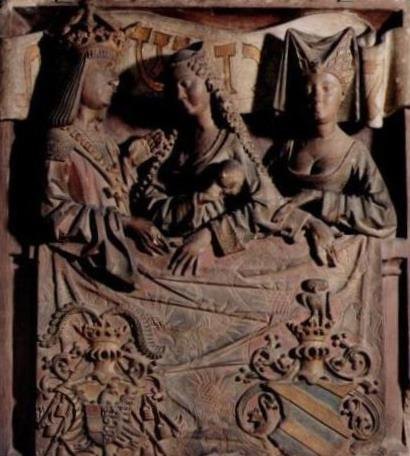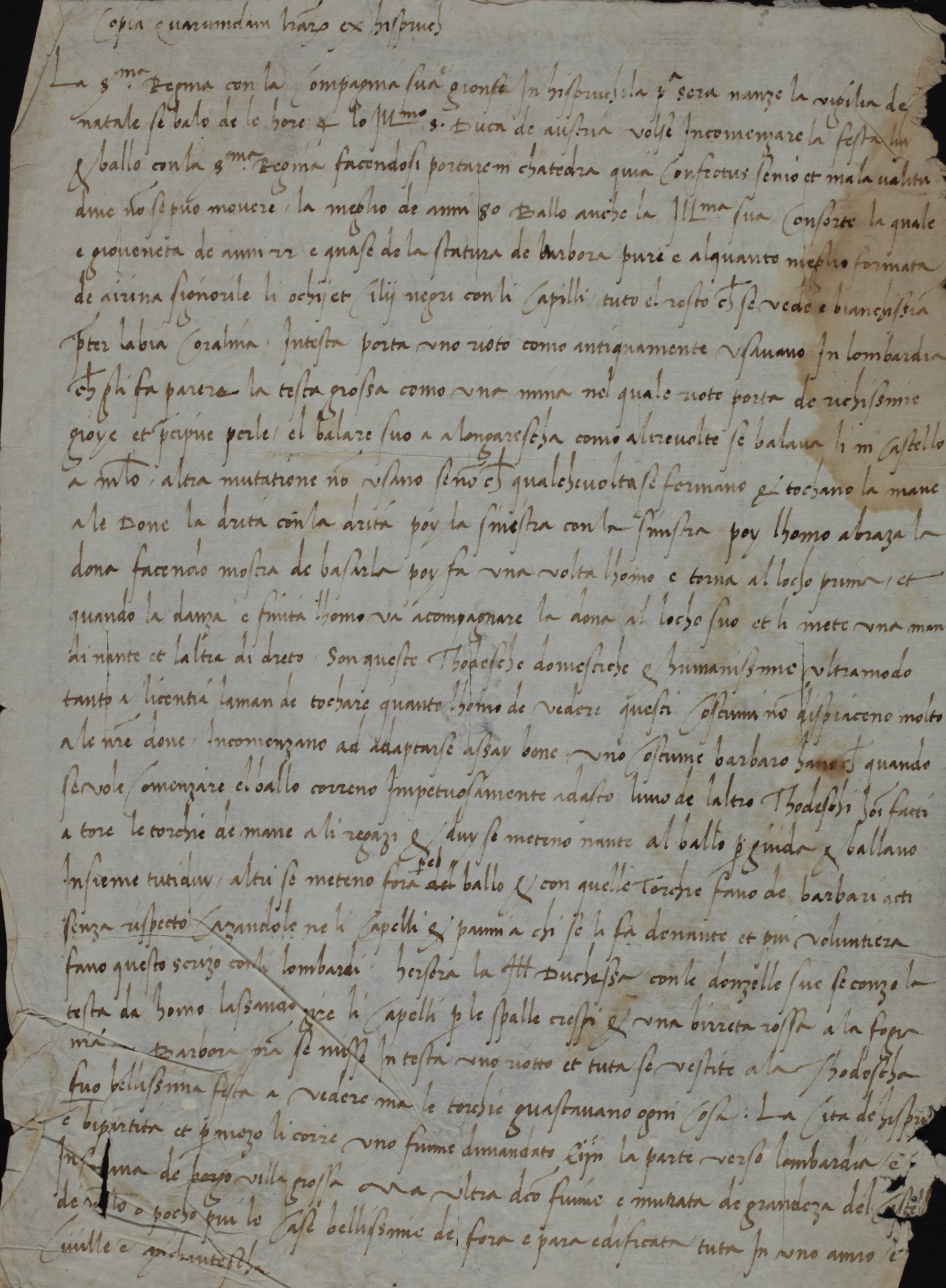The arrival of Bianca Maria Sforza
One occasion that gave rise to accounts of musical performances during the early years of Maximilian’s governance of the Tyrol, was the celebration of his marriage to Bianca Maria Sforza, daughter of Galeazzo Maria Sforza, Duke of Milan, in spring 1494. The wedding had taken place by proxy in Milan on 30 November 1493, Maximilian represented by Margrave Christoph of Baden, and now, in Innsbruck, the newlyweds would celebrate together.[29] Bianca Maria had left Italy for Innsbruck on 5 December with a large entourage, including members of her family. After making various stops en route, she arrived in Imst on 20 December where she was met, not by Maximilian, who had been detained in Vienna, but by Sigmund and his wife Katharina. From Imst she travelled to Innsbruck, arriving there on 22 December and spending Christmas with the old Duke and his young Duchess.[30]
Such a politically significant union called for the fullest possible display of courtly entertainments as well as detailed reports of events by the envoys present. In ambassadorial correspondence of this period – normally so focussed on political matters – we therefore find regular references to the wedding celebrations, including the role of musicians therein. Reports of the Ferrarese envoys of Duke Ercole D’Este are particularly illuminating in this respect. In December 1493, for example, his ambassadors reported home on the dancing that had been held in honour of the new queen on 24 December, following her arrival in Innsbruck (see »Abb. Letter from the Ferrarese ambassadors):[31]
La S[erenissi]ma Regina con la Compagnia sua gionse In Hispruch: la p[rossim]a sera nanze la vigilia de natale se balo de le hore 4 lo Illmo S. Duca de Austria volse Incomenzare la festa luy & ballo con la Sma. Regina facendosi portare in chatedra quia Confectus senio et mala ualitudine non se puo movere. La meglio de anni 80. Ballo anche la Illma sua Consorte la quale e gioveneta de anni 22 […] el balare suo a alongarescha come altrevolte se balava li in Castello a M[i]l[an]o, altra mutatione non usano se non che qualchevolta se fermano & tochano la mane a le Done la drita con la drita poy la sinistra con la sinistra poy lhomo abraza la dona facendo mostra de basarla poy fa una volta lhomo e torna al locho prima, et quando la danza è finita lhomo va acompagnare la dona al locho suo et li mete una man di vante et laltra di dreto …
(The most serene queen reached Innsbruck with her entourage. The following evening, before Christmas Eve, they danced from four o’clock. His most illustrious Lordship, the Duke of Austria wanted to start the festivities and dance with the most serene queen. He was carried there in a chaise as he is elderly, in poor health and cannot move very well. He is over 80 [recte 66] years old. His most illustrious consort also danced, who is a young lady of 22 [recte 25] years old. … they danced the longaresca, as is sometimes danced in the castle in Milan; they did not make any changes, except that sometimes they stop and touch hands with the ladies, the right with the right, then the left with the left, then the man embraces the lady as if to kiss her. The man does this once and then returns to his place. And once this dance (movement) is finished, the man accompanies the lady to her place, placing one hand in front, and the other behind …)

